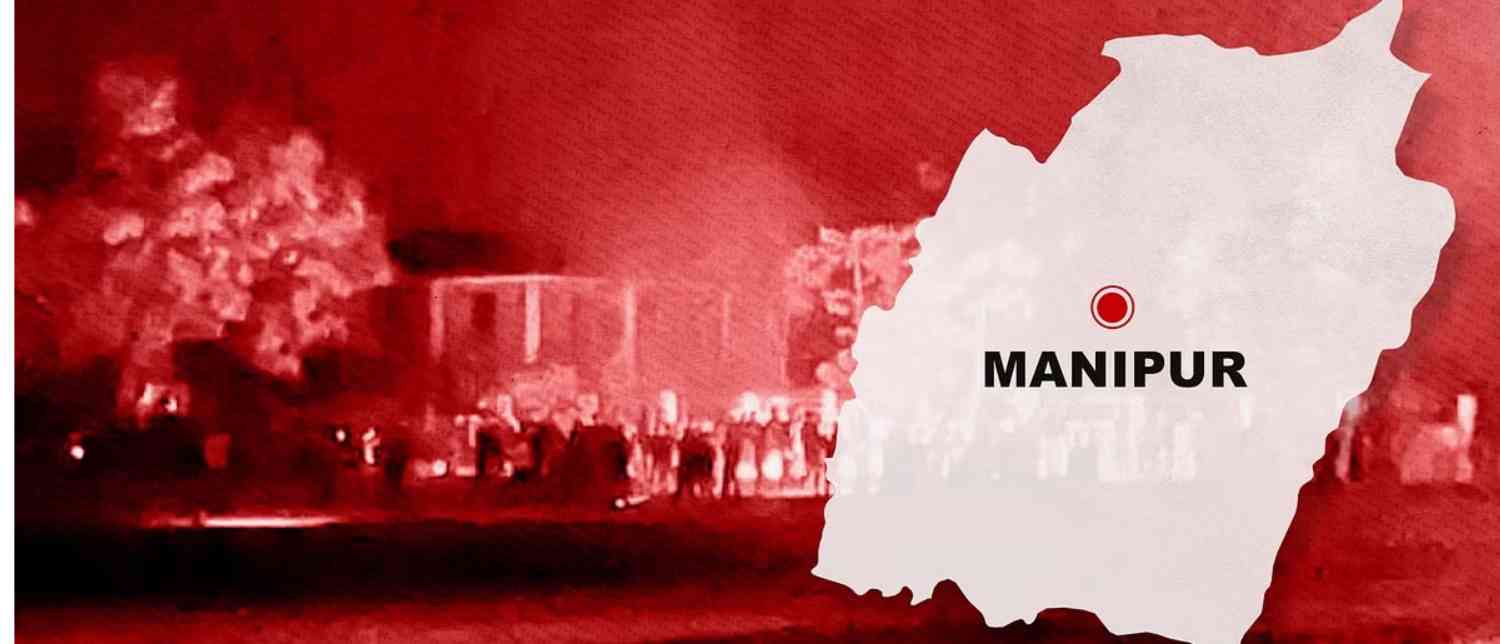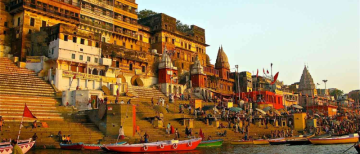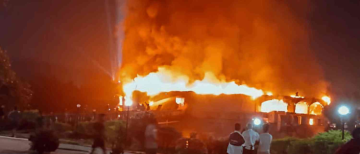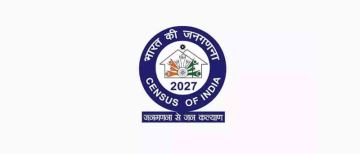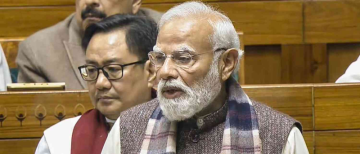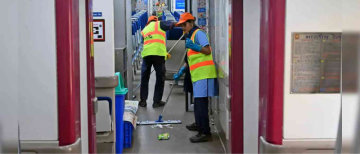Prime Minister Narendra Modi’s visit to Manipur on September 13, 2025, marked his first trip to the northeastern state since the ethnic violence that erupted in May 2023. For many in Manipur, still scarred by killings, arson, and mass displacement, the visit carries profound symbolic and practical significance. With the state under President’s Rule following the resignation of Chief Minister N. Biren Singh in February 2025, Modi’s presence was both highly anticipated and critically scrutinized.
The northeastern state, characterized by a delicate ethnic balance between the Meitei majority in the valley and tribal communities, primarily the Kukis and Nagas in the hills, has endured decades of social tension. The recent violence was a flashpoint of long-standing disputes over land, constitutional protections, and community representation. In the 27 months since the unrest began, Manipur has witnessed prolonged periods of violence and displacement, the strengthening of armed groups, and repeated interventions by the Centre.

Historical and Ethnic Context of the Conflict
Manipur’s ethnic dynamics are complex. Meiteis, comprising roughly 53% of the population, predominantly reside in the Imphal Valley, which constitutes only 10% of the state’s land area. They are largely Hindus, with a small minority of Muslims, known as Meitei Pangals. Historically better represented in education, business, and politics, the Meiteis have long pressed for inclusion in the Scheduled Tribe (ST) list to safeguard land and employment rights.
In contrast, tribal communities—including Kukis (approximately 25%) and Nagas (around 15%)—inhabit nearly 90% of the hill districts. Both groups are predominantly Christian and trace their roots to historical migrations from Myanmar. They argue that their rights are constitutionally protected, and granting Meiteis ST status would threaten the autonomy and security of hill lands. Historically, these tribal groups have clashed, notably in 1993, but also share common ground in opposing perceived Meitei encroachment.
The 2023 Violence: Triggers and Timeline
The immediate spark for the unrest came in April 2023, when the Manipur High Court directed the state government to consider the inclusion of the Meitei community in the ST list. This decision ignited fears among the Kuki tribes of losing their protected land and political autonomy. On May 3, 2023, the All Tribal Students’ Union of Manipur (ATSUM) organized a “Tribal Solidarity March,” which rapidly escalated into widespread violence.
Homes, villages, churches, and temples were attacked. Police armouries were looted, resulting in thousands of stolen weapons, and the state effectively split into two zones: the Meitei-dominated valley and the Kuki-dominated hills, separated by central force-patrolled buffer zones. By July 2023, over 200 people had been killed, tens of thousands were displaced, and reports of atrocities, including the viral video of two Kuki women paraded naked, shocked the nation.
The timeline of the conflict highlights the escalating nature of the unrest:
-
Nov 2022: Forest reclassification in Churachandpur-Khopum fueled tribal anger.
-
Feb 2023: Eviction drives in tribal districts triggered protests.
-
Mar 2023: State withdrew from Suspension of Operations agreements with Kuki militants.
-
Apr 20, 2023: High Court ST directive for Meiteis.
-
May 3, 2023: Tribal Solidarity March erupts; massive displacement and violence.
-
May 28, 2023: Approximately 4,000 weapons looted from police stations.
-
Jul 19, 2023: Viral video of atrocity sparks nationwide outrage.
-
Aug 2023: Supreme Court sets up a committee for relief and rehabilitation.
-
Nov 2023: Relief camps attacked; panic escalates.
-
Apr 2024: BJP loses both Lok Sabha seats in Manipur to Congress.
-
Nov 11, 2024: Kidnappings and retaliatory killings.
-
Dec 31, 2024: Chief Minister N. Biren Singh apologizes.
-
Feb 9, 2025: Biren Singh resigns.
-
Feb 13, 2025: President’s Rule imposed.

Current Situation: Displacement and Security Challenges
Today, Manipur remains deeply divided, with Meitei- and Kuki-majority areas effectively separated by buffer zones maintained by security forces. Thousands of displaced people remain in over 280 relief camps, totaling around 57,000 internally displaced persons (IDPs), many living there for over two years.
Displacement falls into two main categories:
-
Community-majority areas: Kuki-Zo families displaced from Imphal and other valley towns; Meiteis displaced from Moreh and hill towns like Kangpokpi and Churachandpur.
-
Fringe areas: Settlements along the valley-hill border, vacated due to attacks or fear of violence.
Despite government plans for phased resettlement and prefabricated housing, progress has been slow, and free movement remains a challenge. The imposition of President’s Rule in February 2025 has stabilized administrative control but has not resolved the underlying mistrust.
The border with Myanmar adds another layer of complexity. Historically, tribes on either side could travel under the Free Movement Regime, but the Centre scrapped this policy, deciding to fence the border, citing security concerns and illegal immigration. Both Kuki-Zo and Naga communities opposed this, highlighting the delicate balance between security and ethnic affiliations.
The Role of Dialogue and Community Engagement
While large-scale violence has ebbed since late 2024, both sides remain heavily armed, and sporadic clashes still threaten normalcy. The Ministry of Home Affairs has been engaging separately with Meitei and Kuki-Zo groups, renewing the Suspension of Operations (SoO) pact with Kuki-Zo insurgents under the Kuki National Organization and United People’s Front.
Key points of contention:
-
Kuki-Zo groups, while agreeing to honour Manipur’s territorial integrity, continue to demand a Union Territory with legislature.
-
Meitei groups have objected, claiming the pact legitimizes armed tribal groups.
Successful dialogue and confidence-building between communities are widely seen as prerequisites for lasting peace and rehabilitation.

Security Concerns Ahead of PM Modi’s Visit
Days before the visit, miscreants clashed with security forces in Churachandpur, tearing down banners and barricades erected for the Prime Minister. They pelted stones at paramilitary personnel and set fire to torn banners, prompting intensified flag marches and patrolling to restore order.
The state had fortified a seven-kilometre route from Imphal airport to Kangla Fort, with wooden barricades, painted medians, and heightened security measures. Large billboards and welcome gates were installed across towns. These extensive preparations underscored the dual nature of the visit: symbolic outreach and practical development interventions.
PM Modi’s Agenda in Manipur
During his visit, PM Modi focused on both relief and development, interacting with IDPs and inaugurating major infrastructure projects. His itinerary included:
-
Churachandpur (Kuki-majority Peace Ground): Laying foundation stones for 14 projects worth Rs 7,300 crore, including:
-
Manipur Urban Roads and Drainage Project (Rs 3,647 crore)
-
Manipur Infotech Development Project (Rs 550 crore)
-
Super-speciality healthcare facilities
-
Working women’s hostels at nine locations
-
Upgrades to 120 schools across 16 districts
-
Multi-purpose indoor stadium at Khuman Lampak
-
Polo Ground expansion and major road upgrades under Bharatmala Pariyojana
-
-
Imphal (Meitei-majority Kangla Fort): Inaugurating 17 projects worth Rs 1,200 crore, including:
-
New Manipur Police Headquarters (Rs 101 crore)
-
Civil Secretariat at Mantripukhri (Rs 538 crore)
-
Infrastructure upgrades for government colleges in Imphal West, Thoubal, and Kakching
-
Ima Markets at four locations
-
Leishang Hiden Cultural and Heritage Park
-
In total, development works worth Rs 8,500 crore were unveiled, signaling both economic investment and symbolic outreach to bridge ethnic divides. PM Modi emphasized the government’s commitment to “inclusive and all-round development of Manipur.”

Political and Public Reactions
The visit drew sharply divided responses:
-
Opposition Criticism: Congress leaders, including Rahul Gandhi and Jairam Ramesh, dismissed the three-hour visit as symbolic. Ramesh described it as a “farce, not a force for peace,” arguing that the government delayed action for over 29 months.
-
Local Perspectives: Retired Lt. Gen. LN Singh called the visit the “first stone” of rebuilding. Churachandpur leader Ginza Vualzong labeled it “historic,” expressing hope for reconciliation.
-
BJP Support: Party leaders, including Sambit Patra and former Chief Minister N. Biren Singh, welcomed the visit as a potential pathway to peace and normalcy.
Key Issues Shaping the Road Ahead
Manipur’s current challenges extend beyond immediate relief and development projects. Five critical issues define the state’s future:
-
Rehabilitation of Displaced Populations: Approximately 57,000 IDPs remain in camps. While phased resettlement plans exist, progress has been slow, and many continue to fear returning to areas dominated by the other community.
-
Free Movement and Buffer Zones: Tightly monitored zones restrict access to major highways and essential services, impeding daily life and economic recovery.
-
Community Dialogue: The state has no sustained dialogue between Meitei and Kuki-Zo groups. The Ministry of Home Affairs continues separate talks with Kuki-Zo insurgent groups under the Kuki National Organization (KNO) and United People’s Front (UPF), who insist on a “Union Territory with legislature,” reflecting ongoing political friction.
-
Government Formation: President’s Rule continues, following the resignation of N. Biren Singh. While some NDA MLAs advocate restoring a popular government, the Centre has maintained the current status quo to preserve stability.
-
Border Security and Immigration: Porous borders with Myanmar have exacerbated tensions. The Centre’s decision to scrap the Free Movement Regime and fence the border has triggered opposition from Kuki-Zo and Naga groups, who rely on cross-border trade and family networks.
Balancing Symbolism, Development, and Reconciliation
PM Modi’s visit to Manipur highlights the delicate balance between symbolic gestures and tangible interventions. By inaugurating major development projects and engaging directly with displaced communities, the visit sought to project both reconciliation and progress. Yet, decades-long grievances, ethnic distrust, and ongoing political uncertainty mean that Manipur’s path to full peace and normalcy remains challenging.
For ordinary citizens, whether in relief camps or towns awaiting the Prime Minister’s arrival, the overarching demand is clear: a permanent solution and a roadmap for sustainable reconciliation. The 8,500 crore rupees in developmental investment is substantial, but restoring trust, ensuring free movement, and establishing lasting dialogue between communities will ultimately determine whether Manipur can move beyond its recent turmoil.
With inputs from agencies
Image Source: Multiple agencies
© Copyright 2025. All Rights Reserved. Powered by Vygr Media.

